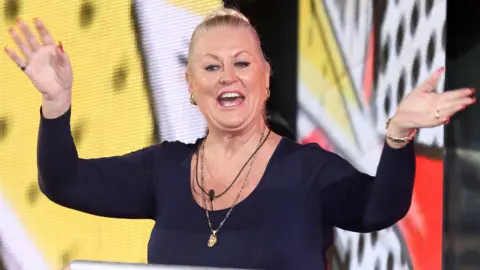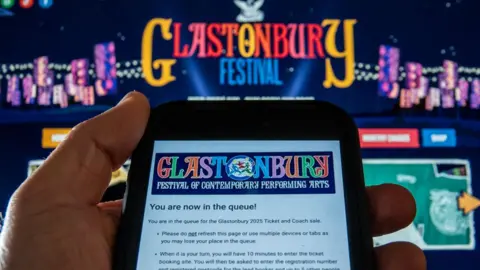- Asia
Mahmoud Khalil leads pro-Palestine rally in New York
时间:2010-12-5 17:23:32 作者:Australia 来源:Politics 查看: 评论:0内容摘要:AP correspondent Karen Chammas reports on four boats that capsized in China leaving 10 people dead.AP correspondent Karen Chammas reports on four boats that capsized in China leaving 10 people dead.
There’s also a so-called “dollar bill suit” by the label 3.Paradis — the jacket sporting a laminated one-dollar bill stitched to the breast pocket, meant to suggest the absence of wealth.The “disguise” section includes a collection of 19th-century newspaper ads announcing rewards for catching runaway enslaved people.

The ads, Miller notes, would often describe someone who was “particularly fond of dress” — or note that the person had taken large wardrobes. The reason was twofold: The fancy clothes made it possible for an enslaved person to cloak their identity. But also, when they finally made it to freedom, they could sell the clothing to help fund their new lives, Miller says.“So dressing above one’s station sometimes was a matter of life and death,” the curator says, “and also enabled people to transition from being enslaved to being liberated.”The contemporary part of this section includes striking embroidered jackets by the label Off-White that purposely play with gender roles — like displaying an ostensibly “male” jacket on a female mannequin.

Stopping by a set of portraits from the early 19th century, as abolitionism was happening in the North, Miller explains that the subjects arewell off enough to commission or sit for portraits, and dressed “in the finest fashions of the day.” Like William Whipper, an abolitionist and wealthy lumber merchant who also founded a literary society.

A design by Grace Wales Bonner is displayed at the Metropolitan Museum of Art’s Costume Institute. (Photo by Charles Sykes/Invision/AP)
A design by Grace Wales Bonner is displayed at the Metropolitan Museum of Art’s Costume Institute. (Photo by Charles Sykes/Invision/AP)a few nights earlier, on May 5. It’s the first Met show to focus exclusively on Black designers, and the first in more than 20 years to have a menswear theme.
A design by Jacques Agbobly, intended for the upcoming Costume Institute exhibit, “Superfine: Tailoring Black Style,” appears in the installation room at the Metropolitan Museum of Art in New York on March 20, 2025. (AP Photo/Jocelyn Noveck)A design by Jacques Agbobly, intended for the upcoming Costume Institute exhibit, “Superfine: Tailoring Black Style,” appears in the installation room at the Metropolitan Museum of Art in New York on March 20, 2025. (AP Photo/Jocelyn Noveck)
As always, the exhibit inspires theand this year’s — “Tailored For You” — makes clear that guests are invited to be as creative as possible within the framework of classic tailoring.
- 最近更新
- 2025-07-07 10:51:00A judge rules that Texas illegally placed people with disabilities in nursing homes
- 2025-07-07 10:51:00You told us how tariffs are affecting you
- 2025-07-07 10:51:005 simple (and cheap) things to make your house use less energy
- 2025-07-07 10:51:00Unseen works by distinctive artist to be auctioned
- 2025-07-07 10:51:00Fed holds interest rates steady, signals rate cuts of 0.5% later this year
- 2025-07-07 10:51:00What separates the ultrarich from the just-plain-rich? The gigayacht.
- 2025-07-07 10:51:002 hours ago Climate change is boosting the risk of sleep apnea
- 2025-07-07 10:51:00Questions remain about the Minnesota rampage. Anti-abortion extremism may shed light
- 热门排行
- 2025-07-07 10:51:00how to move car insurance, license and registration to a new state
- 2025-07-07 10:51:00Welcome to summer: U.S. braces for first significant heat wave of the new season
- 2025-07-07 10:51:00A post shared by Candace Cameron Bure (@candacecbure)
- 2025-07-07 10:51:00School's murals 'strengthen community connection'
- 2025-07-07 10:51:00Telematics car insurance: Is the discount worth sharing your driving data?
- 2025-07-07 10:51:00Edinburgh Filmhouse sets date for big screen comeback
- 2025-07-07 10:51:00Interest rates on 60-month new car loans in the United States from January 2014 to May 2025
- 2025-07-07 10:51:00Winemakers finding Trump's tariffs hard to swallow
- 友情链接
- A room at Dishoom: the cult restaurant opens a tiny hotel What is the difference between Medicare Parts A and B? Diamondbacks star Ketel Marte breaks down in tears after fan allegedly taunts him ove… Will Israel and Iran stop fighting? Taylor Swift Wows Fans with Surprise ‘Shake It Off’ Performance What has happened to Ukraine’s refugees? What has happened to Ukraine’s refugees? guide Best of Medicare Supplement Plans Travel disruptions still hit Middle East in wake of US-Israel-Iran conflict What has happened to Ukraine’s refugees? AOLThe best hair growth products of 2025, according to hair loss experts Diamondbacks star Ketel Marte breaks down in tears after fan allegedly taunts him ove… guide Medicare & High-Income Earners Volunteers use the universal language of music to soothe stressed shelter animals guide Step-by-Step Guide to Medicare Initial Enrollment Trump with Nato ‘all the way’ after questioning mutual defence pact The best barefoot shoes for running Travel disruptions still hit Middle East in wake of US-Israel-Iran conflict guide Medicare & Professional Caregivers Eating Well7 late-night snacks to support your metabolism, according to experts guide Medicare Savings Programs for Limited-Income Individuals The best barefoot shoes for running We asked 5 chefs to name the best brand of cheddar cheese, and they all picked the sa… ReutersNew data show most US patients now stay on Wegovy, Zepbound after a year CBS NewsAfter 36 years in LA, grandmother self-deports to Mexico, leaves family behind Iran’s Pezeshkian expresses ‘regret’ to the emir of Qatar guide Understanding Medicare Supplement Plans Israel-Iran ceasefire holds; Israeli forces kill 31 in Gaza An outsider’s view is likely to foster innovation How oil traders called the Middle East conflict
